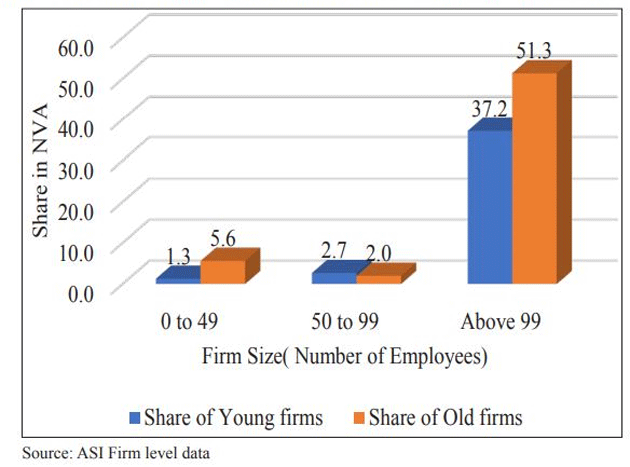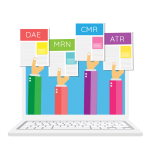Содержание

It may rely more on short-term sources than on long-term sources for financing current assets, i.e., it is opposite to the conservative policy. Thus, in short,’ long-term sources can he used for the acquisition of fixed assets plus permanent current assets plus a part of temporary current assets and short-term sources are used only for the part of temporary current assets. Of course, the proportion of short-term and long-term sources for financing current assets depends on so many factors, e.g. flexibility, cost, risk, demand and supply of money market and so on.
The entire requirements of working capital of public sector undertakings were financed by the Government until recently. Working capital cycle refers to the time taken to convert net current liabilities and assets into cash by a business. The shorter theworking capital cycle, the swifter the company will free up its blocked cash.
SergeFerrari Group: Full-Year 2022 Results – Business Wire
SergeFerrari Group: Full-Year 2022 Results.
Posted: Thu, 02 Mar 2023 17:03:00 GMT [source]
https://1investing.in/ liabilities are those liabilities which can be payable within a short period of time generally in one year. The term working capital management refers to the efforts of the management towards the effective management of current assets and current liabilities. It is mainly concerned with the fact that funds are not unnecessarily locked in current assets.
Capital: Meaning, Characteristics, Function and Importance of Capital
The total working capital requirement is determined by a wide variety of factors. To maintain a smooth flow of production, it is necessary that adequate working capital is available for paying trade suppliers, hiring labour and incurring other operating expenses. As a result, a part of short-term sources (i.e., Rs. 10,000 – Rs. 8,000) or Rs. 2,000 is used for financing fixed assets. If gross concept of working capital is used, there will always be positive working capital as it represents only current assets.
On the other hand, if the working capital is found to be negative, this would imply that the business has been weighed down by an excessive amount of burden from debts, losses, and so on. 8.4 shows the situation for a firm which attempts to match assets and liability maturities. But in practice, an exact matching plan may not always be possible.

Accounts receivable represent the amount of goods sold on credit with a view to increase the volume of sales. According to the Indian Chamber of Commerce and Industry study of 417 companies, the ratios of accounts receivable to total assets, current assets and sales were, on average, 17%, 30% and 14-15% respectively. To maintain the proper balance between the amount of current assets and liabilities in such a way that the firm is always able to meet its financial obligations whenever due. This will ensure the smooth working of the unit without any production held ups due to paucity of funds. Thus, we can have gross working capital comprising current assets and net working capital representing current assets minus current liabilities. From the viewpoint of the finance manager this basis of classification is helpful since it categorizes the various areas of financial responsibility.
How Can a Company Improve Its Working Capital?
On the other hand investment in inventories, receivables, etc., will decrease in periods of depression. Inventories refer to raw material, work-in-progress and finished goods. These constitute a major portion, about 60%, of total current assets. There are three major motives for holding inventories in a firm, namely, transaction motive, precautionary motive and speculative motive.
A company with negative working capital may have trouble paying suppliers and creditors and difficulty raising funds to drive business growth. If the situation continues, it may eventually be forced to shut down. Working capital is important because it is necessary for businesses to remain solvent. In theory, a business could become bankrupt even if it is profitable. After all, a business cannot rely on paper profits to pay its bills—those bills need to be paid in cash readily in hand.
How Working Capital Affects Cash Flow
If the funds are tied- up in idle current assets represent poor and inefficient working capital management which affects the firm’s liquidity as well as profitability. Working capital policies can help to help find out the right level of working capital that a business should maintain. Working capital policies deal with the quantum factor, i.e., how much current assets should be maintained? These policies, in essence, are different levels of the tradeoff between liquidity and profitability. Theoretically, the following three types of policies are explained, whereas they can be n number of policies depending on where the tradeoff is stricken between liquidity and profitability.
In this way, seasonal working characteristics of working capital means an amount of working capital maintained to meet the seasonal demand of the product. The minimum amount of working capital to be maintained in normal condition is called Regular Working Capital. Capital intensive industries, i.e., mechanised and automated industries, will require lower working capital, while labour intensive industries such as small-scale and cottage industries will require larger working capital. If inventories are large and their turn-over is slow we shall require larger capital but if inventories are small and their turnover is quick we shall require lower working capital. They are listed on the stock exchange and hence they have marketability and liquidity. Depending on the tax environment of the industry, working capital needs are also affected.
Therefore, the choice of financing current assets lies in between short-term and long-term sources. It should be remembered in this respect that short-term financing is less expensive than long-term one. It should not be the practice of any firm to use working capital funds for acquiring fixed assets. Because while liquidating such short-term liabilities, the firm will experience a different working capital. Same principle is also applicable in case of public sector undertakings. In order to ascertain the real position of wording capital, certain adjustments, which are abnormal in nature, are to be adjusted against each component of current assets and current liabilities.
Gross & Net Working Capital
The temporary working capital represents the excess of permanent working capital that is required at different times during the operating year. It refers to all aspects of current assets and current liabilities. The management of working capital is no less important than the management of long-term financial investment. Sufficient liquidity is necessary and must be achieved and maintained to provide that funds to payoff obligation as they arise or mature. The adequacy of cash and other current assets together with their efficient handling virtually determine the survival of the company.
The amount of current assets which are kept by a firm in hand day-in and day out, i.e., throughout the year is designated as Regular or Fixed Working Capital. Economists like Mead, Mallot, Backer and Field are of the opinion that the whole of these current assets from the Working Capital of a firm. And this concept of Working Capital of a firm is frequently termed as Gross Working Capital in the arena of Financial Management. This reduces current liabilities because the debts are no longer due within a year.
- The said 25% being calculated differently at the aforesaid three distinct stages.
- Though the requirement of working capital is felt permanently, its requirement fluctuates more widely than that of fixed capital.
- Gross working capital indicates the firm’s investment and financing of current assets.
- Debt capital is then required to be paid at regular intervals with added interest.
- Practically, the net cash flow from operation must not be considered as they are available for use at the end of the financial year.
The company has more than enough resources to cover its short-term debt, and there is residual cash should all current assets be liquidated to pay this debt. Companies need to have positive working capital to be able to pay their bills and other obligations as they come due. If a company has negative working capital, it means that its current liabilities exceed its current assets and it may have difficulty meeting its short-term obligations.
Thus, every firm should follow a rationalized credit policy depending upon the credit status of the customers and some factors. Sometimes the firm should analyze the existing credit policy and modify the same, if necessary, by reviewing the credit worthiness of various customers Thus, credit policy of the firm affects the requirement of working capital. The trend and significance of trade credit as a source of working finance, however, depends on several factors, like, the size and the rate of growth of the company, its financial resources and Bank finance.
When new liquid capital becomes available for recommitment to productive activity, a new operating cycle begins. Apart from this, different industries depend on different equipment, use different revenue accounting methods, and different approaches to other industry-specific matters. For these reasons, comparison of working capital is generally most meaningful among firms within the same industry. Adequate working capital is required to meet the commitments towards short-term liabilities like salaries, wages, power and fuel expenses, taxes, etc. The efficiency of the business operation improves the pace of the cash cycle, thereby strengthens the working capital turnover. The size of a business firm affects the working capital requirements.
Credit Policy
Net working working capital is a measure of a company’s liquidity and refers back to the difference between working current property and operating present liabilities. In many circumstances these calculations are the same and are derived from company money plus accounts receivable plus inventories, much less accounts payable and less accrued bills. A managerial accounting strategy specializing in sustaining environment friendly levels of both components of working capital, current belongings, and current liabilities, in respect to each other. Working capital management ensures a company has enough cash move to be able to meet its short-term debt obligations and working expenses.
The inventory turnover ratio, calculated as cost of goods sold divided by average balance sheet inventory, reveals how rapidly a company’s inventory is being used in sales and replaced. A relatively low ratio compared to industry peers indicates a risk that inventory levels are excessively high, while a relatively high ratio may indicate inadequate inventory levels. The term current asset is used to describe anything that can be quickly changed into cash within a period of one year. These assets are predominantly found in the form of the most liquidated assets held by the business.








